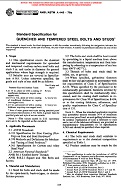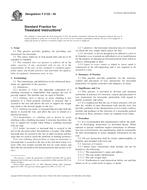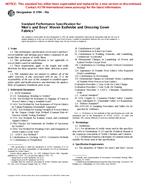1.1 This specification covers solder metal alloys (commonly known as soft solders), including zinc-aluminum, zinc-aluminum-copper, zinc-tin, zinc-tin-copper, zinc-cadmium-tin, zinc-cadmium, tin-zinc, cadmium-zinc, cadmium-zinc-silver, and cadmium-silver, used for the purpose of joining together two or more metals at temperatures below their melting points.
1.1.1 Certain alloys are also used in Thermal Spray Wire by the electronics industry (as noted in the Annex part of this specification). B833 covers Zinc and Zinc Alloy Wire for Thermal Spraying (Metallizing) used primarily for the corrosion protection of steel (as noted in the Annex part of this specification).
1.1.2 Tin base alloys are included in this specification because their use in the electronics industry is different than the major use of the tin and lead solder compositions specified in B32.
1.1.3 These solders include alloys having a nominal liquidus temperature not exceeding 850oF (455oC).
1.1.4 This specification includes solder in the form of solid bars, ingots, powder and special forms, and in the form of solid wire, and solder paste.
1.2 The values stated in inch-pound units are to be regarded as the standard. The values given in parentheses are for information only.
1.3 Toxicity–Warning: Soluble and respirable forms of cadmium may be harmful to human health and the environment in certain forms and concentrations. Therefore, ingestion and inhalation of cadmium should be controlled under the appropriate regulations of the U.S. Occupational Safety and Health Administration (OSHA). Cadmium-containing alloys and coatings should not be used on articles that will contact food or beverages, or for dental and other equipment that is normally inserted in the mouth. Similarly, if articles using cadmium-containing alloys or coatings are welded, soldered, brazed, ground, flame-cut, or otherwise heated during fabrication, adequate ventilation must be provided to maintain occupational cadmium exposure below the OSHA Permissible Exposure Level (PEL).
1.4 This standard does not purport to address all of the safety concerns, if any, associated with its use. It is the responsibility of the user of this standard to become familiar with all hazards including those identified in the appropriate Material Data Sheet for this product/material as provided by the manufacturer, to establish appropriate safety and health practices, and determine the applicability of regulatory limitations prior to use.
Product Details
- Published:
- 01/01/2000
- Number of Pages:
- 6
- File Size:
- 1 file , 30 KB


